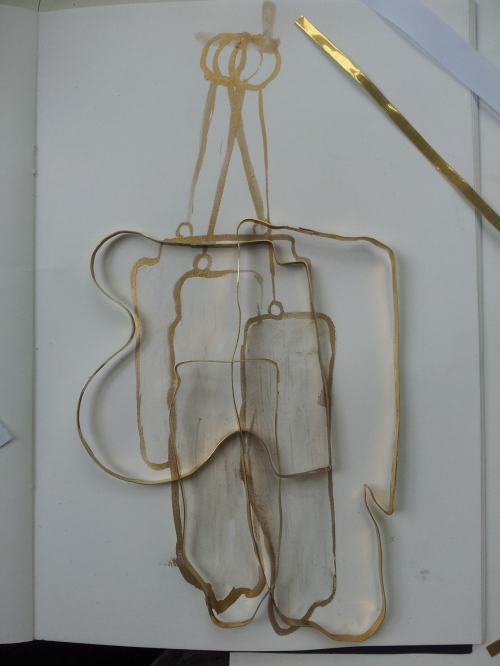

When I returned after a busy Bank Holiday at the Abbey Roger told me that some of the work I had left around the site were missing so I went to investigate. I found that six pieces were missing from the original 16. A few more than I had anticipated, but then I had wanted to know the limitations before I started installing everything in the securer spaces and now I had a fairly good idea what I could get away with and how I can work here without having extensive pieces go walk abouts.


I began to look for evidence. Fearing destruction I looked for bits of broken wax or stone, coloured threads. Passing the South Transept I spotted the flash of white wax and discovered a carefully assembled collection of my objects: one piece had been taken apart and then grouped with another one of my pieces that was missing from the dormitory stairs. There was also a piece of ornate terracotta pottery here that was completely new. Strange. The total lost was now down to 4 pieces, but I had gained a new fragment too.

A long thread of blue silk tangled on the Chapter House floor confirmed that at least one of the whittled figurines left within the Sacristy has been unfurled and the small wax figure detached and I stand over it, wondering which piece they wanted: the stick or the figure? I find someone else has placed a clump of cut grass under one of the wax heads on the dormitory stairs. After photographing the evidence I return to the Summer House. Upon turning the corner I see that one of the other whittled figures has been stabbed into the ground by the fish pond intact. Apparently Roger thought I had moved it when he found it there on Saturday morning, I hadn’t but had originally planned to install them like this and in fact, in that spot. Pieces lost: 3, not too bad.


The pieces were intended to be temporary and whilst the research and idea development that led to them was extensive, the making of them was relatively quick. The process was not what made them precious, it was the ideas behind them and the reaction they received from viewers. If people interacted with them then this is just as valid a reaction. Of course, removing them all together is useless, unless I now receive ransom notes about them.
I hid my work and then someone else hid it from me, meddled with it and didn’t worry about handling it. Some of the future interventions here will be secured and some will not, I think we can be playful with this.














